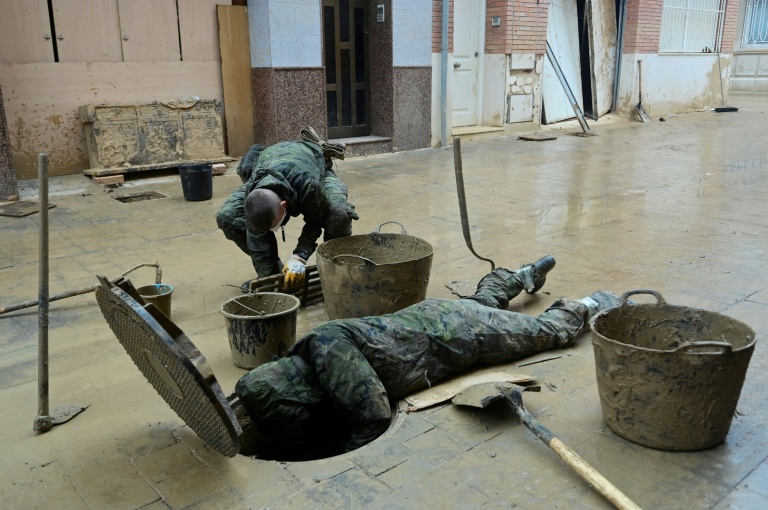
Spain evacuated thousands of residents and closed schools on Wednesday as torrential rains lashed the country two weeks after its worst floods in a generation killed more than 220 people.
National weather office AEMET placed the southern province of Malaga and the northeastern Catalonia region on red alert — the highest level — for strong rains expected to last until Friday.
It forecasts up to 180 millimetres of rain could fall there in just 12 hours, while less severe downpours struck the eastern Valencia region already devastated by the floods.
Advertisement
Advertisement
Emergency services in the southern Andalusia region said more than 1,000 homes and almost 3,000 residents had been evacuated in and around the city of Malaga.
Footage on social media showed Malaga’s normally bustling commercial centre deserted and cars ploughing through rising water that had submerged roads.
Ester Espinosa, a 47-year-old resident of Malaga’s Campanillas suburb, told AFP residents were erecting a barricade to fend off the water.
“It hasn’t been exaggerated at all,” added Ida Maria Ledesma Martin, a 39-year-old social educator who said police had warned residents that morning.
Advertisement
Advertisement
The high-speed line connecting Madrid and Malaga as well as regional services were suspended, national railway operator Renfe said, while the local metro was shut.
Malaga airport cancelled one flight and diverted five others, operator Aena wrote on X. Local television images showed its entrance had been inundated.
The start of the Billie Jean King Cup tennis finals between Spain and Poland in Malaga was also postponed.
“Today Malaga is paralysed… if there is intense rain in a short period of time, there are no capacities or infrastructure that can cope,” the Andalusia region’s leader Juanma Moreno told reporters.
Advertisement
Advertisement
– ‘Prevention better than cure’ –
The rain meant schools and universities closed across large parts of Valencia, Andalusia and Catalonia.
Officials in the Valencia region have warned sewage systems already clogged with mud could struggle to cope with a fresh storm.
The October 29 catastrophe killed 223 people, mostly in the Valencia region, wrecked infrastructure, gutted buildings and submerged fields. The final bill is expected to soar to tens of billions of euros.
“There’s nothing to lose now,” Carlos Molto, a resident of the Picanya suburb of Valencia city, told local television station A Punt.
Advertisement
Advertisement
Many people in the destroyed town of Paiporta had barricaded their homes with planks or sandbags to try to protect them from fresh flooding, an AFP journalist saw.
The regional governments of Andalusia and Catalonia sent emergency alerts to mobile phones warning people to be cautious, after many residents in Valencia two weeks ago received them too late.
“Prevention is better than cure, we have already seen it in Valencia,” Moreno said.
Both storms are the result of a sudden cold drop, known in Spanish as a “gota fria”. When cold air moves over the warm waters of the Mediterranean Sea, it allows the hotter, moist air at the surface to rise quickly. This produces intense rain clouds.
bur-imm/ds/yad
EMEA Tribune is not involved in this news article, it is taken from our partners and or from the News Agencies. Copyright and Credit go to the News Agencies, email news@emeatribune.com Follow our WhatsApp verified Channel




